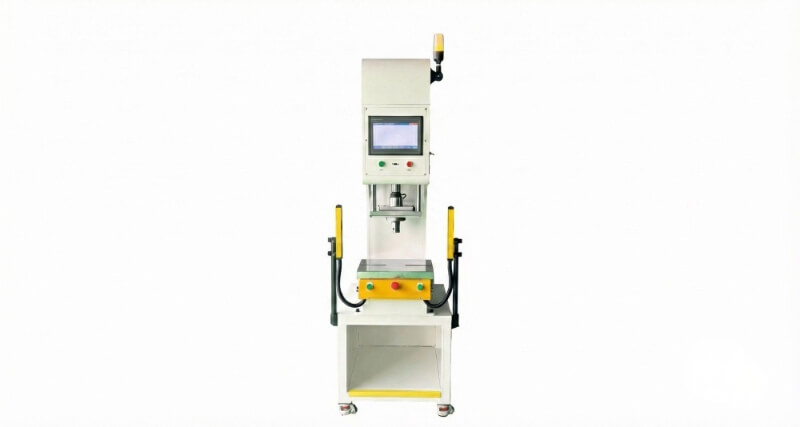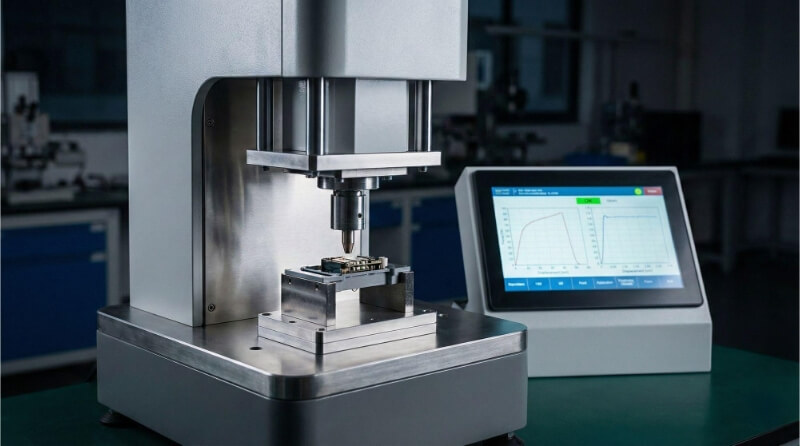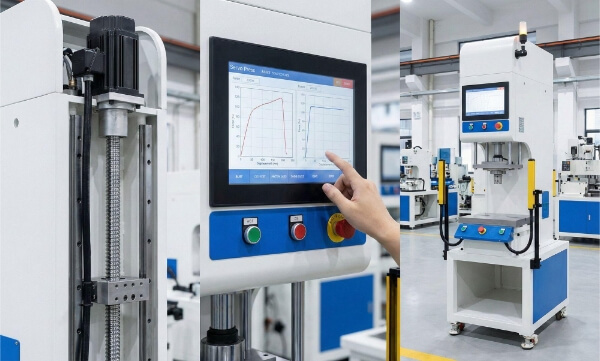Tool and die manufacturing plays a crucial role in modern industry. With it, the mass production of countless daily products is possible. Tool and die makers shape the world, from automotive parts to household appliances.
Tool and die manufacturing involves creating precision tools, dies, molds, jigs, and fixtures used in mass production. These components are essential for shaping, cutting, and forming materials like metal, plastic, and rubber into finished products. The process requires high skill, attention to detail, and advanced technology.
Curious about how this intricate process works? Let’s explore the critical aspects of tool and die manufacturing and its impact on various industries.
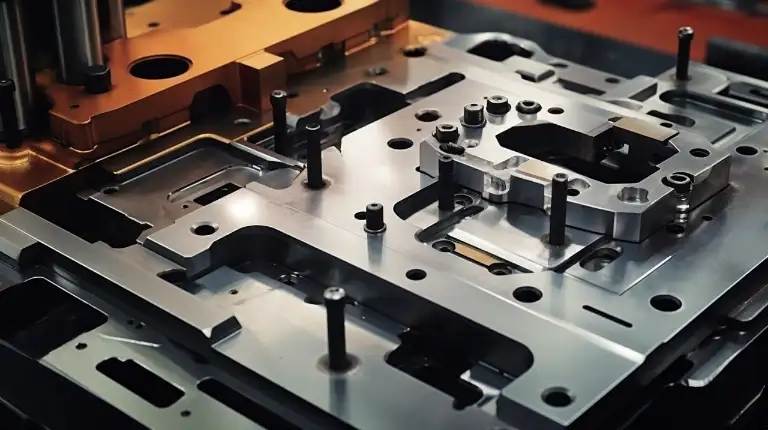
Basics of Tool and Die Manufacturing
Understanding Tool and Die
Tool and die manufacturing forms the backbone of mass production. It involves creating precision instruments to shape, cut, and form materials into finished products. These tools and dies are crucial for producing consistent, high-quality parts efficiently.
Components of tool and die systems include:
- Cutting tools
- Forming dies
- Jigs and fixtures
- Gauges and measuring devices
Each component plays a specific role in manufacturing, ensuring accuracy and repeatability.
Types of Tools and Dies
- Progressive Dies: These complex tools perform multiple operations in a single press stroke. They’re ideal for high-volume production of small to medium-sized parts.
- Transfer Dies: Transfer dies are used for more significant parts, and they move workpieces between stations using a mechanical transfer system.
- Compound Dies: These perform two or more operations in a single stroke, often combining cutting and forming processes.
Materials Used in Tool and Die Manufacturing
Common materials include:
- Tool steel
- High-speed steel
- Carbide
- Cast iron
Material selection depends on factors like:
- Hardness requirements
- Wear resistance
- Thermal properties
- Cost-effectiveness
Choosing the suitable material is crucial for tool longevity and product quality.
The Tool and Die Manufacturing Process
Designing Tools and Dies
CAD and CAM in Design: Modern tool and die design relies heavily on Computer-Aided Design (CAD) and Computer-Aided Manufacturing (CAM) software. These technologies allow for precise 3D modeling and simulation of tool performance before production begins.
Prototype Development: Prototyping helps validate designs and identify potential issues early. We use rapid prototyping techniques to create physical models for testing and refinement.
Manufacturing Techniques
Machining
CNC machining forms the core of tool and die manufacturing. It offers high precision and repeatability for complex geometries.
Grinding
Grinding achieves ultra-smooth surfaces and tight tolerances. It’s essential for creating wear-resistant tool surfaces.
EDM (Electrical Discharge Machining)
EDM excels at creating intricate shapes in hard materials. It’s beneficial for making mold cavities and cutting tools.
Forging
Forging produces solid and durable tools with excellent grain structure. It’s often used for large dies and forming tools.
Casting
Casting allows for the creation of complex shapes with internal cavities. It’s useful for producing large tool bodies.
Assembly and Testing
Steps in Assembly:
- Component inspection
- Fitting and alignment
- Surface treatment
- Final assembly
Testing for Quality Assurance: We rigorously test tools and dies to ensure they meet specifications. This includes dimensional checks, material hardness tests, and trial runs.
Applications of Tool and Die Manufacturing
Automotive
Tool and die manufacturing is crucial in automotive production. It enables the mass production of body panels, engine components, and interior parts.
Consumer Electronics
The electronics industry demands precision tools and dies, from those used for crafting intricate casings to fin dies for heat exchangers, to meet the stringent requirements of modern electronic devices.
Aerospace
Aerospace applications demand high-precision, durable tools for shaping complex aircraft and spacecraft parts.
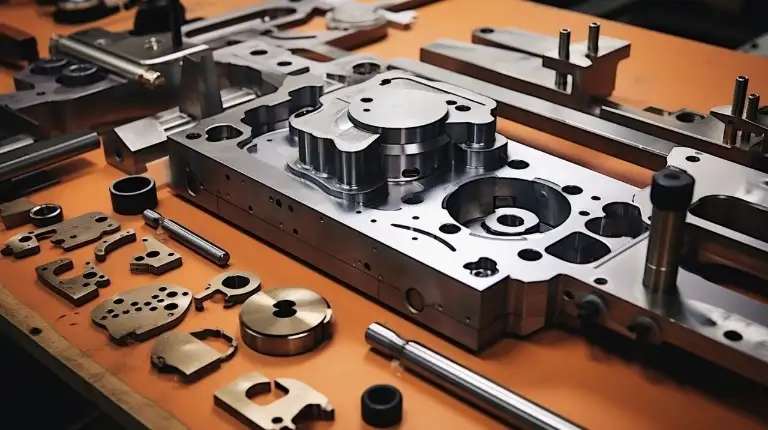
Trends and Innovations
Automation in Tool and Die Making
Automation is revolutionizing tool and die manufacturing. Robotic systems now handle material loading, part removal, and machining operations. This boosts efficiency and consistency.
3D Printing and Its Impact
3D printing is making waves in prototyping and small-scale production. It allows for rapid iteration of designs and can even produce some end-use tools and dies.
Eco-friendly Materials and Processes
We’re seeing a shift towards more sustainable practices. This includes using recyclable materials, implementing energy-efficient processes, and reducing waste.
How Consumer Demand is Shaping the Industry
Customers increasingly demand personalized products. This trend pushes tool and die makers to develop more flexible, adaptable manufacturing solutions.
Trade Policies and International Competition
Global trade dynamics significantly impact the tool and die industry. Changing policies and international competition drive innovation and cost-efficiency measures.
Challenges in Tool and Die Manufacturing
Key Challenges
- Skill Shortages: The industry needs more skilled workers. As experienced professionals retire, there’s a growing need for new talent with traditional and modern skills.
- Cost Management: Rising material costs and increasing global competition pressure manufacturers to optimize their processes and pricing strategies.
Solutions and Best Practices
- Training Programs: Many companies are investing in comprehensive training programs. These initiatives aim to bridge the skills gap and prepare the next generation of tool and die makers.
- Technological Advancements: Embracing new technologies like AI-assisted design and advanced simulation tools helps overcome challenges and improve efficiency.
Conclusion
Tool and die manufacturing stands as a cornerstone of modern industrial production. Its precision and versatility enable the mass production of countless products we use daily. As technology advances, the industry continues to evolve, embracing automation, 3D printing, and sustainable practices. Despite challenges like skill shortages and cost pressures, innovative solutions and ongoing technological advancements keep the field dynamic and essential.
Do you need a reliable sheet metal parts manufacturer? Shengen is the place to go. We specialize in sheet metal laser cutting, bending, surface finish, and CNC Machining. Reach out to Shengen Today and seek help from professionals!
FAQs
What is the difference between a tool and a die?
Tools perform specific operations like cutting, shaping, or measuring. Dies are specialized tools designed to cut or shape materials into a specific form. Tools are often more versatile, while dies are custom-made for a particular part or product.
How long does it typically take to manufacture a custom die?
The time to manufacture a custom die varies based on complexity and size. Simple dies might take a few weeks, while complex progressive dies could require several months. Factors affecting the timeline include design complexity, material availability, and production schedules.
What are the costs involved in tool and die manufacturing?
Costs in tool and die manufacturing depend on various factors:
- Design complexity
- Material selection
- Production volume
- Required precision
Large, complex dies for high-volume production can be significant investments. However, they often pay off through increased efficiency and product quality.
How does tool and die manufacturing impact product quality?
Tool and die quality directly influences final product quality. Precision-engineered tools and dies ensure:
- Consistent part dimensions
- Smooth surface finishes
- Accurate product assembly
- Reduced waste and defects
High-quality tools and dies lead to higher-quality products and more efficient production processes.
How is the tool and die industry adapting to digital technologies?
The tool and die industry is rapidly embracing digital technologies:
- CAD/CAM software for precise design and simulation
- CNC machining for accurate and repeatable production
- 3D printing for rapid prototyping and small-scale production
- IoT sensors for real-time monitoring and predictive maintenance
- AI and machine learning for optimizing designs and processes
These technologies enhance precision, speed up production, and allow for more complex and customized solutions.
More Resources:
Advanced materials for die casting – Source: 3ERP
Automation trends in manufacturing – Source: Vention
Sustainable manufacturing practices – Source: US BPA
Hey, I'm Kevin Lee

For the past 10 years, I’ve been immersed in various forms of sheet metal fabrication, sharing cool insights here from my experiences across diverse workshops.
Get in touch

Kevin Lee
I have over ten years of professional experience in sheet metal fabrication, specializing in laser cutting, bending, welding, and surface treatment techniques. As the Technical Director at Shengen, I am committed to solving complex manufacturing challenges and driving innovation and quality in each project.

